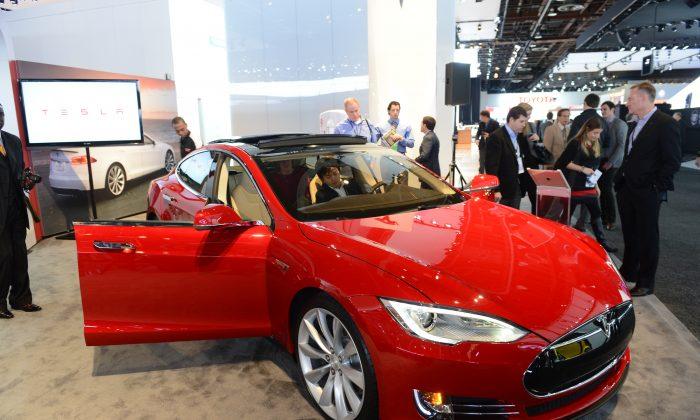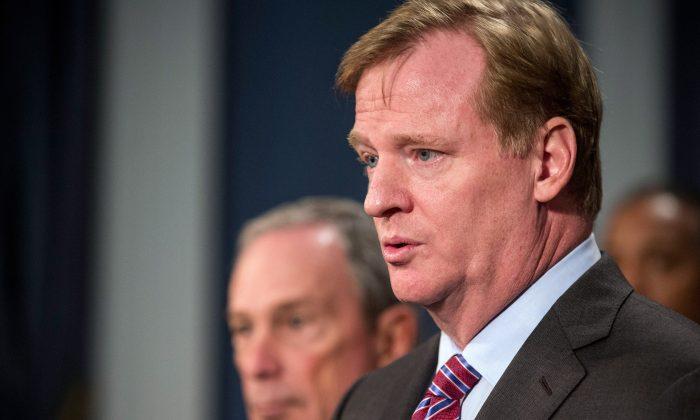The share price of electric carmaker Tesla Motors Inc. (NASDAQ: TSLA) has gone gangbusters recently, zooming higher by more than 50 percent since it reported its first quarterly profit of $11 million last week.
The California-based company reported earnings per share of $0.12, vastly higher than the 3 cents per share expected by Wall Street analysts.
During the first quarter, Tesla produced 4,900 Model S electric sedans, which is 400 more than its projections. “In the process, we reduced the hours required to build a car by almost 40% from December to March,” CEO Elon Musk wrote in a letter to shareholders.
“We also improved our inventory management. During Q1, raw materials declined by almost 26%, while unit production increased 80%. Better inventory management contributed over $30 million in cash and reduced our logistics costs during the quarter.”
The news was a coup for Musk, the company’s gregarious and confident CEO, and its shareholders, who had seen their share of doubters. Tesla’s stock surged more than 14 percent on the day of announcement, May 8, and has been on an upward trajectory since.
Model S Holds Key
Tesla’s fate largely rests upon the Model S, a four-door electric luxury performance sedan, which is seen as the company’s bread-and-butter model. It also builds a two-door Roadster, which has a higher price and is more of a niche product.
The Model S retails between $70,000 and $100,000, and can drive up to 300 miles on a single charge, depending on the battery size. It’s surprisingly powerful, with the top model capable of achieving 0-60 mph acceleration in 4.2 seconds (for some perspective, that’s faster than Audi’s V-12 R8 sports car). It has also received rave reviews from industry publications, including receiving Car of the Year honors from Motor Trend. Consumer Reports magazine assigned it a score of 99 out of 100, one of the highest scores ever given out for an automobile.
The company expects to produce another 5,000 units of the Model S in the second quarter and ship more than 21,000 in the third quarter. Musk says that the company will spend $200 million in additional capital expenditures this year.
Pricing Issues
While Model S sales during the first three months of 2013 surpassed those of Chevrolet Volts or Nissan Leafs, the sales figures aren’t close to what Tesla hopes to achieve.
Part of the issue hindering its growth is the car’s high sticker price, and Musk has been desperate in marketing the Model S as affordable, or at least seemingly affordable.
In early April, Musk took the world by surprise when he proclaimed that the company would offer “financing” as low as $500 per month for the Model S. After criticism from the media and analysts, the company admitted that the originally estimated $500 monthly payment factored in some wild assumptions (for example quantifying time saved by not having to visit the gas station in dollars), which wouldn’t normally be part of any such calculation.
This month, Tesla clarified its stance and has worked out arrangements with Wells Fargo and U.S. Bank to offer 72-month loans with low interest rates. Musk has also personally guaranteed that after three years, the resale and trade-in value of the Model S would exceed that of similar models from Lexus, Mercedes-Benz, BMW, and Audi.
Here’s how the math would work. Consider a base-model Model S with a 60-kilowatt-hour battery, which retails for $71,070. Tesla assumes that the buyer would pay 15 percent, or $10,660, in down payment and take out a 72-month loan with an interest rate of 2.95 percent. The buyer also gets $7,500 in federal tax incentives (higher if you live in California). With that, monthly payments are around $1,004.
Next is where the math gets a bit trickier. The company assumes that a normal driver drives 15,000 miles per year, at 20 mpg average fuel efficiency, with $4.90 per gallon in gasoline cost (although currently the national average is below $4 per gallon). That effectively gives the Model S driver a $261 monthly gas “savings” compared with driving a similar alternative.
Additionally, Tesla guarantees that the three-year resale value of the Model S would be higher than a comparative luxury car. For example, if the driver trades in the vehicle, the money received would be higher than the loan principal balance. Amortize that sum over 36 months and the Model S owners enjoy a “bonus” of $95 per month over their rival luxury drivers. All that assumes the owner gets rid of the car in three years.
So $1,004, minus $261 and $95, equals $648, which is what Tesla believes the owner “effectively” pays in monthly installments.
The plan’s affordability is questionable. Nonetheless Tesla is making good headway in the luxury segment. First-quarter automobile sales data indicates that Tesla sold more Model S sedans than each of the 7-Series, S Class, and A8 sold by BMW, Mercedes-Benz, and Audi, respectively.
Growth Outlook
While the Model S is Tesla’s only mainstream model at the moment, the company isn’t a one-trick pony.
Its margins will be closely watched by Wall Street. Musk, in a conference call with analysts, said that the company hasn’t put sales volume at the forefront yet and will not until it can operate more efficiently. It has already made good progress, as Tesla disclosed in its quarterly earnings that costs per Model S decreased 40 percent from December 2012 to March 2013.
As margins improve, profits will rise, leveraged by higher sales volumes, if company projections hold true. The question lies in whether the company can keep expanding production capacity to meet demand.
In the meantime, it has some cash buffer in the form of California zero-emission vehicle credits. The state mandates automakers producing more than 60,000 vehicles to also sell a number of zero-emission cars. If they can’t meet the quota, they can buy credits from others. In Q1, sales of such credits by Tesla to other automakers amounted to around $68 million, or more than 10 percent of its revenues.
Recent developments have also convinced Wall Street. “The Tesla debate has moved on from questions of viability to measuring the success and sustainable competitive advantage of the business,” wrote Morgan Stanley analysts in a research note to clients this week.
A Forbes report on May 13 noted that borrowed shares of Tesla declined 10 percent after its earnings announcement last week, a sign that short sellers were being squeezed. The phenomenon was reminiscent of Netflix shares popping in January after a surprising quarterly profit. Today, Netflix is the highest performing S&P 500 component year to date.
Does Tesla’s stock also have room to run? Unless the company runs into unexpected production issues or the government cuts tax incentives, TSLA most likely will go higher.





Friends Read Free